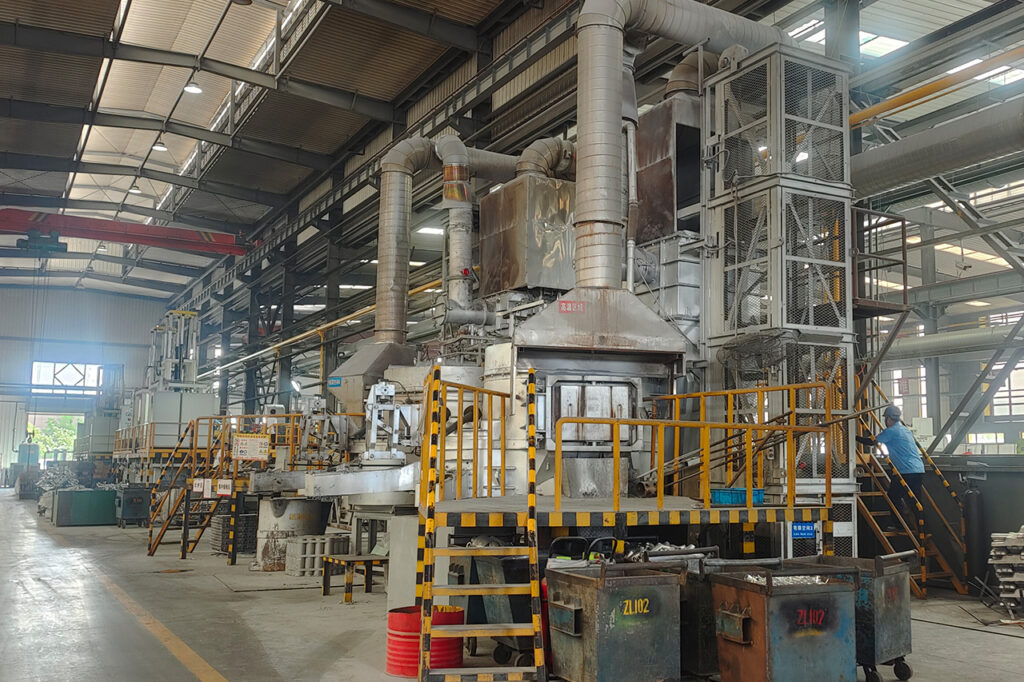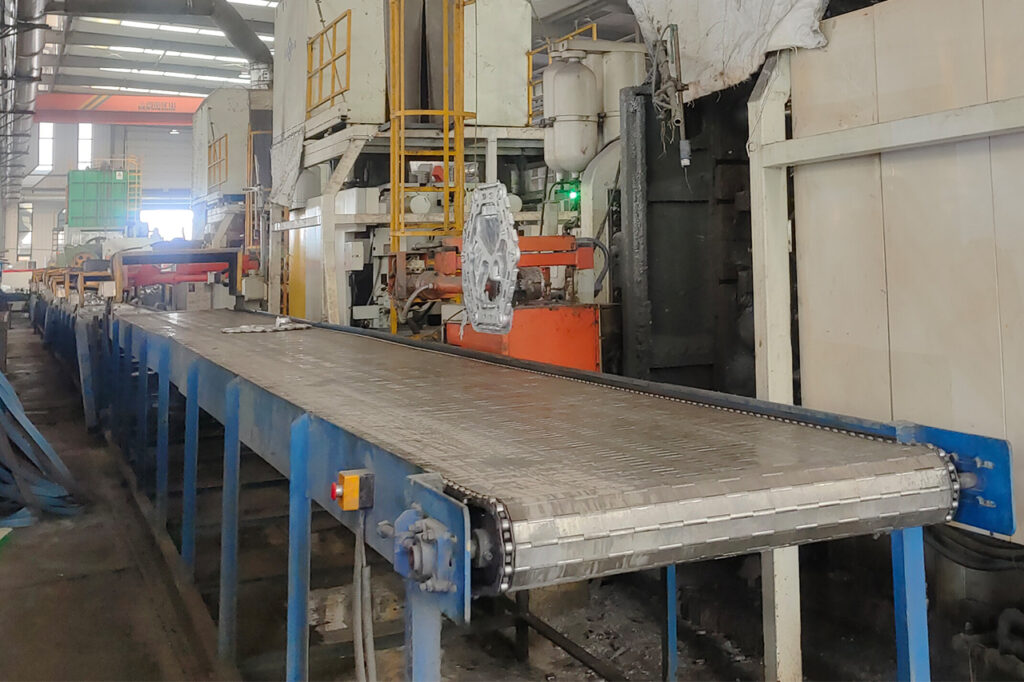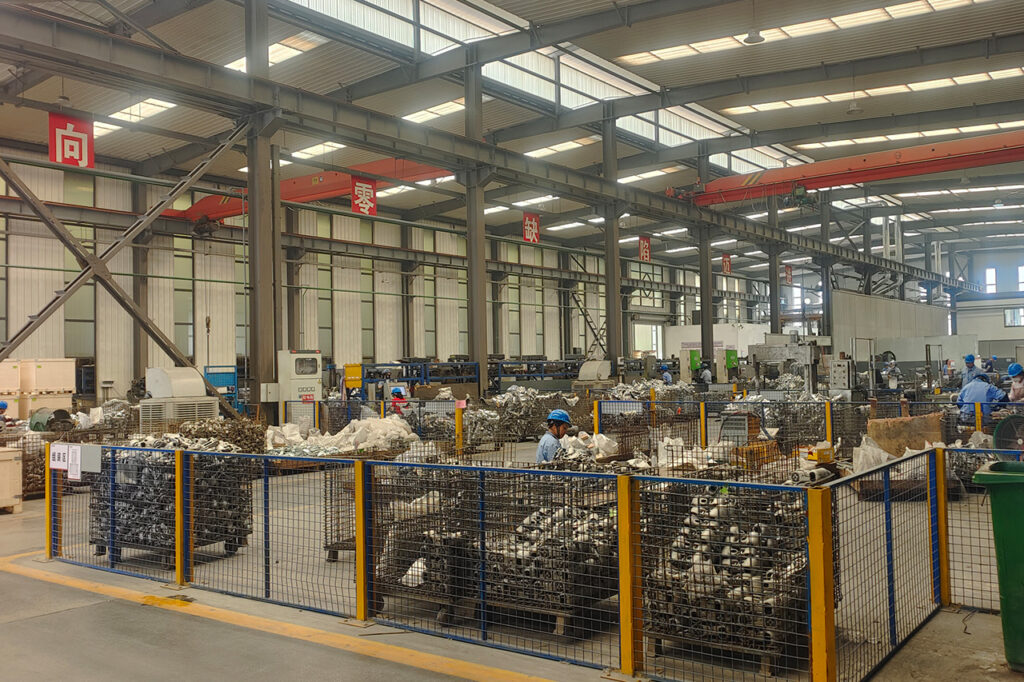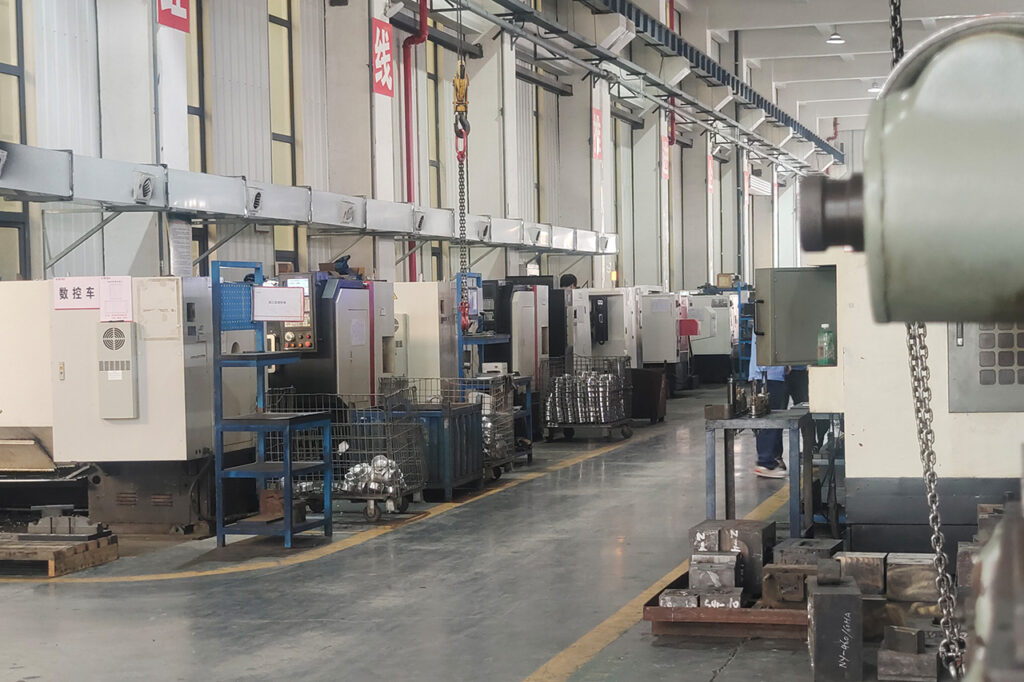Process Flow
- Raw material preparation: Select the appropriate aluminum alloy material according to the design requirements. The unique alloy proportion material of SH Power.
- Cutting to size: The raw material is cut into a blank of the required size. The diameter and length of the blank need to be precisely calculated to ensure the smooth progress of subsequent processing.
- Heating: The blank is heated to a certain temperature to make it ductile, facilitating subsequent forging processing.
- Die forging: SH Power has a continuous automated production line that can achieve unmanned operation. Robots place the heated blank into the mold, and the forging equipment applies pressure to form the blank in the mold. After forming, the robots take it out and place it on the conveyor belt.
- Trimming: Remove the excess flash from the die-forged part to make the forging’s shape more regular.
- Heat treatment: Heat treatment is performed on the forging to improve its mechanical properties. The heat treatment process parameters and process flow are key to ensuring the performance of the forging.
- Subsequent processing: This includes deburring, caustic washing, etc., to remove burrs, oxide scale, and other impurities from the surface of the forging, making its surface smoother and cleaner.
- Inspection and testing: Conduct dimensional inspection, visual inspection, and mechanical property testing on the final forging to ensure that it meets the design requirements and relevant standards.



Technical Features
- Enhanced mechanical properties: The forging process can eliminate defects such as gas pores and casting porosity produced during metal smelting, optimize the microstructure, and thereby increase the density and strength of the suspension clamp.
- Lightweight: Using lightweight materials like aluminum alloy for forging can achieve the lightweight of suspension clamps and other components, reducing the load on power transmission lines.
- Complex shape manufacturing: Through precision die forging mold design and rational forging process, it is possible to manufacture suspension components with complex geometric shapes to meet different design requirements.
- High precision: The forging process can ensure high dimensional accuracy and surface quality, reducing subsequent machining and improving production efficiency.
- High reliability: Forged suspension components have better toughness and fatigue resistance, and can withstand larger loads and complex working conditions during long-term operation.
Application Scenarios
- Power transmission lines: Forged suspension clamps are widely used in high-voltage and extra-high-voltage power transmission lines. They are used to suspend conductors to suspension insulator strings or support ground wires on towers, bearing the combined vertical load of the conductors and the horizontal wind load.
- Other power equipment: In addition to suspension clamps, the forging process can also be used to manufacture other suspension components in power systems, such as spacer dampers, to improve their performance and reliability.


